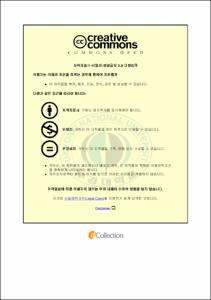이리도바이러스에 인위 감염된 쏘가리(Siniperca scherzeri)의 면역유전자 발현 특성
- Abstract
- Infectious spleen and kidney necrosis virus(ISKNV), family Iridoviridae, genus megalocytivirus is causative agent of provoking high mortality of mandarin fish in China and have attracted more attention because of their ecological and economic impacts on wild and cultured fishes.
In this study korean mandarin fish Siniperca scherzeri which is same Percichthyidae family with chinese mandarin fish Siniperca chuatsi is used to investigate the pathogenicity of ISKNV-like megalocytivirus, named PGIV-1, isolated from pearl gourami in Korea after intraperitoneal challenge with analysis of the changed immune genes expression.
Cumulative mortalities of S.scherzeri challenged with three different density of PGIV-1 infected kidney of homogenates, 100㎍ fish-1, 10㎍ fish-1, 1㎍ fish-1 were calculated. No mortality is observed in challenged group with the lowest PGIV-1 density, 1㎍ fish-1 over 30 days as the control group injected with PBS. However, other two challenged groups, density of PGIV-1 100㎍ fish-1 and 10㎍ fish-1 showed 100% mortality.
For cloning of immune genes, degenerated primer sets were designed after alignment with the corresponding genes of chinese mandarin fish for PCR amplification. After cloning of the target genes, amino acid sequences were also deduced and compared with
those in S.chuatsi from china to determine the identity with each other.
Real-time PCR is performed to measure the expression level of the immune genes in S.scherzeri after various times of PGIV-1 challenge.
Expression of interleukin 8, IRF1, viperin and Mx genes were up-regulated significantly, which is contrast to the expression of IRF2 and IRF7 genes showing consistent expression.
- Issued Date
- 2012
- Awarded Date
- 2012. 2
- Type
- Dissertation
- Publisher
- 국립부경대학교
- Department
- 대학원 수산생명의학과
- Advisor
- 정현도
- Table Of Contents
- Ⅰ. 서 론 1
Ⅱ. 재료 및 방법
1. 실험어 5
2. 바이러스 공격실험 5
2-1. 바이러스 5
2-2. Viral DNA의 분리 6
2-3. PCR(Polymerase chain reaction) 증폭 6
2-3-1. Primary PCR 증폭 7
2-3.-2. Nested PCR 증폭 8
2-4. 주사액의 준비 8
2-5. 공격 실험 8
2-5-1. 면역유전자의 발현변화 측정을 위한 공격실험 8
2-5-2. 바이러스 농도별 누적폐사율 측정을 위한 공격실험 9
3. 누적 폐사율의 측정 9
4. 면역유전자 발현의 측정 12
4-1. 바이러스 공격 후 0, 1, 4, 10일째 시료채취 실시 12
4-2. Total RNA 분리 12
4-3. RT-PCR 실시 13
4-4. 클로닝 13
4-4-1. Degenerated 프라이머 제작 및 PCR 증폭 13
4-4-2. 부분 유전자의 결정 14
5. 면역유전자의 발현량 분석 17
5-1. 프라이머 제작 17
5-2. 면역유전자의 실시간 유전자 증폭(Real-time PCR) 실시 17
5-2-1. Internal control 유전자의 결정 18
6. 통계학적 분석 20
Ⅲ. 결 과 21
1. 이리도바이러스 감염에 의한 누적폐사율의 측정 21
2. 쏘가리에서 발현하는 면역유전자의 클로닝 26
3. 쏘가리에서 발한하는 면역유전자의 부분 아미노산 서열의 특성 28
4. Internal control 유전자의 결정 31
5. 면역유전자 발현량 분석 33
5-1. 쏘가리 면역유전자의 basal level 33
5-2. 쏘가리 면역유전자의 발현 분석 36
5-2-1. IRF1 36
5-2-2. IRF2 36
5-2-3. IRF7 36
5-2-4. Mx protein 37
5-2-5. Viperin 37
5-2-6. 인터루킨 8 38
Ⅳ. 고 찰 51
Ⅴ. 요 약 60
Ⅵ. 감사의 글 62
Ⅶ. 참고문헌 64
- Degree
- Master
- Files in This Item:
-
-
Download
 이리도바이러스에 인위 감염된 쏘가리(Siniperca scherzeri)의 면역유전자 발현 특성.pdf
기타 데이터 / 1.17 MB / Adobe PDF
이리도바이러스에 인위 감염된 쏘가리(Siniperca scherzeri)의 면역유전자 발현 특성.pdf
기타 데이터 / 1.17 MB / Adobe PDF
-
Items in Repository are protected by copyright, with all rights reserved, unless otherwise indicated.